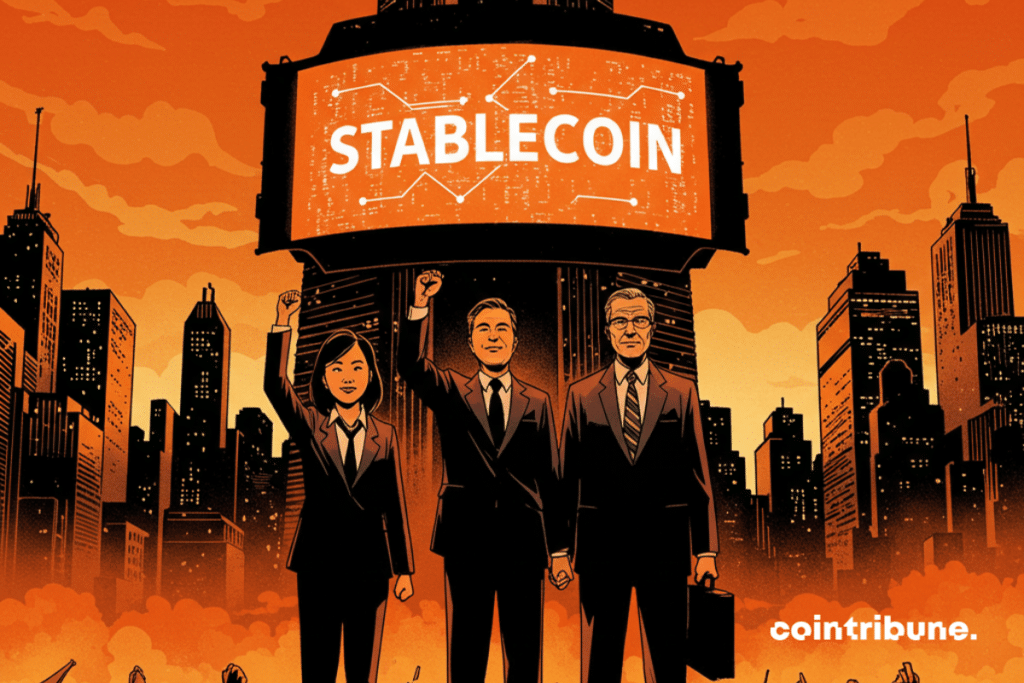Crypto Sees Spike In Demand For Non-Dollar Stablecoins
What if the dollar was no longer the only compass for stablecoins? Around the world, a powerful movement is forming: governments, regulators, and companies want alternatives. Between monetary sovereignty and geopolitical ambitions, crypto is taking an unexpected turn.

In brief
- More and more states are challenging the dollar’s dominance over stablecoins, citing sovereignty issues.
- Europe is actively exploring alternatives to the greenback.
- New stablecoins pegged to other currencies are emerging.
Towards a crypto world without the greenback?
Almost always, stablecoins have bowed to the dollar. USDT and USDC reign supreme in the crypto universe, imposing their digital hegemony with the same confidence as an overly wealthy American uncle at a family dinner. However, in the shadow of this dominance, a dispute is maturing. It’s not a loud revolution, but a subtle, almost geopolitical tremor.
Dea Markova, an influential voice at Fireblocks, doesn’t mince words: this is no longer just a technical alternative, but a claim for sovereignty.
After all, why should the flourishing economies of Singapore or Abu Dhabi rely on assets based on American debt? This is no longer a question of technology, but of political stance. And as history has shown with Visa and Mastercard, great powers dislike depending on a foreign authority, no matter how stable it may be.
The European Union itself, often cautious, is beginning to frown. The digital euro is no longer a distant concept but a strategic response to a dominance deemed dangerously systemic. Even regulated, even transparent, cryptos backed by the dollar face a muted, almost instinctive resistance. A rejection of the excessively American, like a subtle but persistent allergy.
Emerging paths between pragmatism and vision
It is in this tense climate that some states take alternative paths. The United Arab Emirates, for example, do not bother with dogmas. Rather than imposing rigid regulatory barriers, they choose the path of discernment. In Abu Dhabi, no local passport is needed to exist: cryptos are evaluated on their merit, not their origin.
This strategy is paying off. USDT is recognized as a virtual asset. Circle, with its USDC, has also received the green light. But above all, a stablecoin pegged to the dirham is in development. A first that could serve as a model for other ambitious nations eager to play their own monetary role in the digital concert.
The message is clear: the era of the dollar-king may be coming to an end in the crypto universe. Global adoption will no longer pass solely through American standards. The wind is shifting, driven by a desire for rebalancing. Crypto being what it is, the story remains to be written — but this time, the ink may no longer be green.
Maximize your Cointribune experience with our "Read to Earn" program! For every article you read, earn points and access exclusive rewards. Sign up now and start earning benefits.

Fascinated by Bitcoin since 2017, Evariste has continuously researched the subject. While his initial interest was in trading, he now actively seeks to understand all advances centered on cryptocurrencies. As an editor, he strives to consistently deliver high-quality work that reflects the state of the sector as a whole.
The views, thoughts, and opinions expressed in this article belong solely to the author, and should not be taken as investment advice. Do your own research before taking any investment decisions.